ELD Short-Haul Exemptions: Is Your Team Eligible?
Optimize routes, boost productivity, and ensure compliance with eLogii's fleet management solution. Simplify operations and maximize efficiency today!
Home > Blog > How to Use Fleet Management Route Optimization to Boost Efficiency
Delivery LogisticsLearn why fleet management & route optimization are important to unlock your fleet’s potential and what to look for in a fleet management routing solution.
Fleet management route optimization is a game-changer for businesses aiming to improve operations and reduce costs. If you own a fleet management business - such as delivery services or services that make on-field calls - you are well aware of how overwhelming it can be.
And if, on top of that, you want to excel in your line of work, i.e. achieve optimal efficiency at the lowest possible cost without compromising customers’ satisfaction, things get even trickier.
In this blog, we’ll spell out all you need to manage and optimize your fleet usage, including:
Fleet management is one of the essential parts of your supply chain logistics.
Sounds pretty straightforward, right?
However, there is nothing straightforward about actually doing it, as it involves taking care of various issues, including but not limited to:
The main aim of fleet management is to ensure that the fleet runs smoothly, on time and stays within the set budget.

And that’s precisely what makes fleet management such a crucial matter to pay attention to, as fleet optimization can significantly improve your fleet's usage and efficiency, saving you both time and money. Fleet lifecycle management optimization ensures that vehicles are utilized efficiently throughout their lifespan, reducing operational costs and maximizing overall performance.
Foregoing fleet management altogether - or being sloppy about it - means you’ll be left with no guard against all of the numerous challenges fleet management is facing today, such as:
One thing is clear - not investing in fleet management is simply not a viable option for modern businesses.
And even though there are specialised fleet management systems on the market, we advise against using them for several reasons, including the following:
A robust fleet optimization model is essential for addressing these shortcomings and ensuring your operations remain efficient and scalable.
Today’s market requires more advanced solutions that can tackle more than the mere basics of fleet management.
Route optimization is the process of finding the shortest and most efficient route in a given set of circumstances.
To find the route that’s the most efficient, numerous factors must be taken into consideration, including:
And these are just a few of the numerous parameters that influence route optimization.
Given the hectic pace of life nowadays, it’s inevitable that things change quickly and unexpectedly, meaning that the route that was optimal in one moment can become your downfall in the second.

Moreover, if you’re keen on unlocking your optimal efficiency, you should know that fleet route optimization involves more than routing and fleet usage, as we’ve mentioned before.
Another critical point of optimization is customer satisfaction because a lousy delivery experience amounts to customer churn before you know it.
So it’s safe to say that route optimization has never been as challenging as it is today.
And why should you matter about route optimization?
Well, for one simple reason - route optimization is the #1 thing that can help you save money, win over new customers and retain existing ones.
Route optimization - when done right - will effectively reduce your costs and enable you to provide exquisite customer service at the same time by:
This alone justifies route optimisation as essential to your overall last-mile delivery logistics.

While you can do all of this manually, at least in theory, the truth is technology can significantly leverage your efficiency regarding fleet route optimization, as it will perform all the necessary tasks faster and much more accurately than a human could.
However, making sure a solution has what’s necessary for adapting to changes that can and will inevitably happen when the vehicles are already in transit is vital for success.
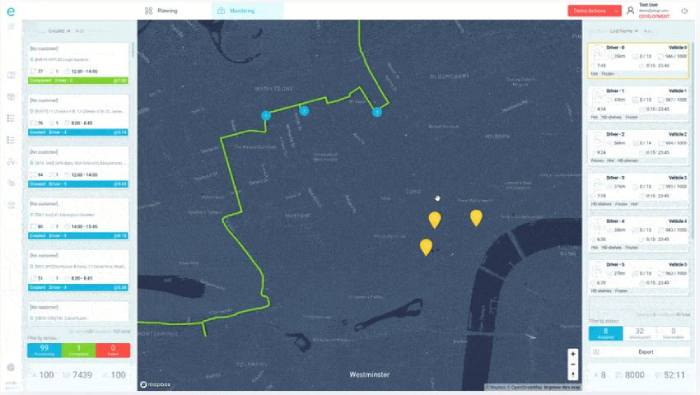
Fleet optimization solutions often come with advanced features such as real-time tracking, dynamic rerouting, and predictive analytics, making them indispensable for modern logistics operations.
And although there are tools that are focused on route optimization first and foremost, like OptimoRoute, for example, that does not make them an ideal choice for optimization as a whole.
Putting some effort into finding a tool that can provide you with all the additional functionality needed for unlocking your fleet’s optimal potential, such as eLogii, will go a long way.
To put it in the words of one of our satisfied clients, Ananas:
“We looked at a number of last-mile platforms on the market and few had the capabilities to handle the level of scale we require and provide the level of customer experience we are looking to give our shoppers.”
Care to see how eLogii’s optimization capabilities can boost your efficiency too? Book a demo in under 2 minutes, and we’ll provide a custom-tailored experience of eLogii in action.
We’ve seen that fleet management & route optimization go hand in hand when you want to ensure exceptional operational efficiency and outstanding customer experience.
However, there are many fleet management route optimization platforms out there, meaning that it can be quite troublesome to find the right one for you.
Luckily, there are features that differentiate a great fleet management optimization platform from software that is just ok at best. A top-tier fleet optimizer stands out by offering advanced features that enhance efficiency, flexibility, and scalability for your operations.
We’ll split these features into 3 main areas a great fleet management route optimization solution needs to cover:
So, if a solution has most - or, ideally, all - of the features listed below, rest assured that you cannot go wrong with using it.
And now, let’s look at each category and its pertaining features separately.
There are several noteworthy features in this category.
Setting up and customising various operational parameters will help you make the most of your fleet. What that means for your business is:
Thus, the key feature an excellent fleet management route optimization solution should have is the option that enables optimal allocation of loads to vehicles. Effective fleet management routing also ensures that these loads are distributed efficiently while considering real-time conditions and operational constraints.
Your solution of choice needs to consider the kind and requirements of each load as well as the type, capacity and characteristics of the vehicle and allocate the loads accordingly.
This can be done by having options for setting up vehicle types and their particular characteristics (e.g. refrigeration, loading equipment, restrictions on movements on certain roads), as well as alternative ways of calculating load, including weight, volume, and others.
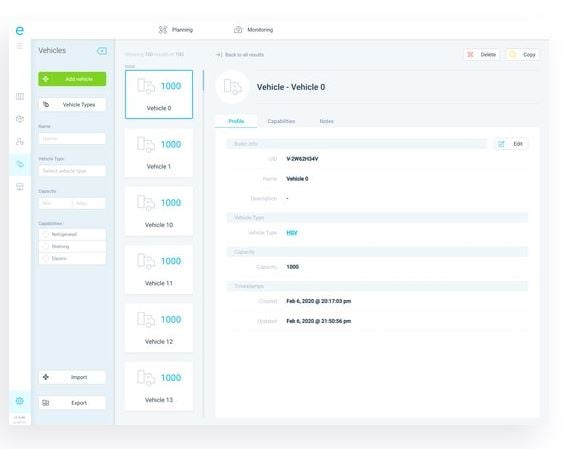
That way, you’ll ensure that every package is matched with the vehicle most suited for its safe and efficient transportation without exception.
Having a comprehensive overview of your drivers’ skills, performance, schedules and availability at a glance will make fleet and operations management much easier and will consequently help with amping up your efficiency.
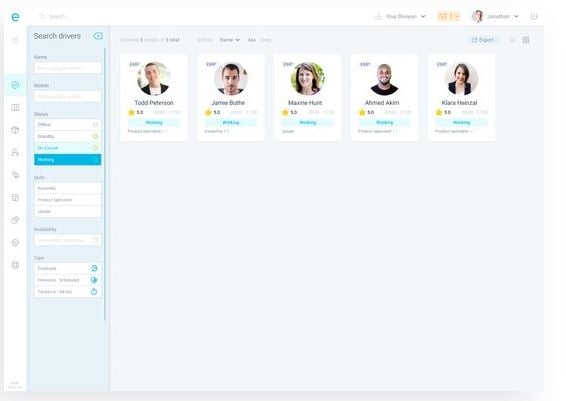
A driver management dashboard could enable you to do various things, such as:
And why is this so crucial? Well, for starters, it will help with minimising overtime work, while the data on drivers’ breaks, preferences, and skills will be taken into consideration when designing optimal routes.
Another essential thing here is enabling drivers to feedback information from the field, which can help significantly improve performance.
The easiest way to achieve this is by using a dedicated mobile app which will enable things such as:
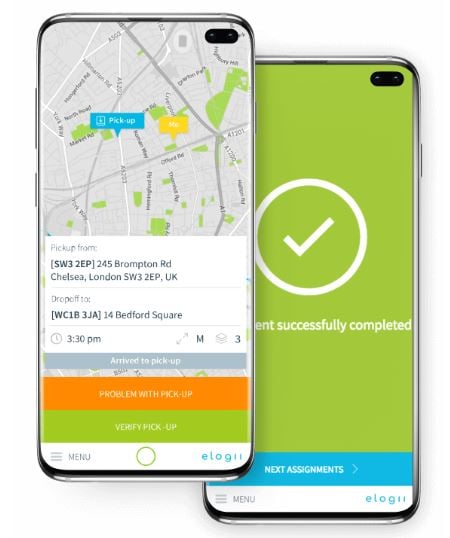
Keeping track and analysing your performance is essential for knowing whether you’re hitting your designated KPIs and what, if anything, needs to be changed or improved.
A good solution will collect and report on:
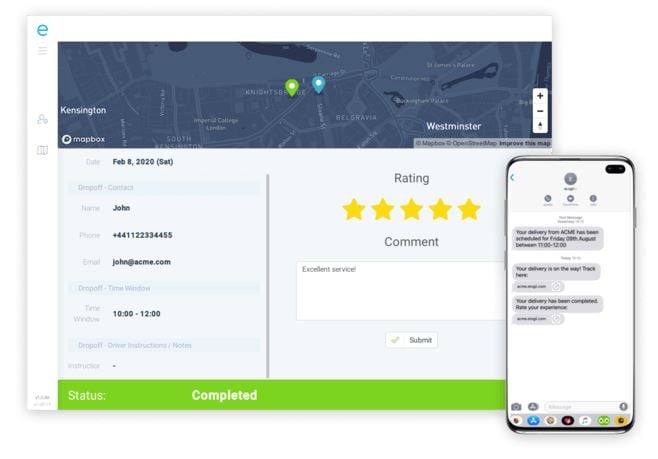
The perfect fleet management route optimization solution should also have options that enable seamless integration with all the other parts of the supply chain.
Being able to easily import and export data from various other tools and databases and connect other technologies with your solution of choice, will allow the whole operational chain to work smoothly. Incorporating fleet management routing into this integration ensures that route planning aligns seamlessly with broader supply chain activities.
So, finding a solution with a well-designed API can help you both integrate last-mile delivery optimization with other parts of the process and save you vast amounts of developer time in getting your tech stack to work efficiently.
A good API and webhooks mean you’ll easily integrate it with all the other tools and technology you use to manage other supply chain operations like order processing, inventory, etc.
Making your customers happy and ensuring that your relationship continues to thrive will be much easier with the help of a few features.
![]()
Keeping customers in the loop on their deliveries’ current whereabouts and ETA is the basis of an excellent customer experience.
So, your solution should be able to:
Another key factor of customer satisfaction is enabling seamless proof of delivery (POD) collection that can be easily traced if needed.
The use of technology makes it possible to use several methods of proof of delivery, which are impossible to tamper with as they are often time- and geo-stamped. That also makes it much easier to quickly determine where any package ended up at.
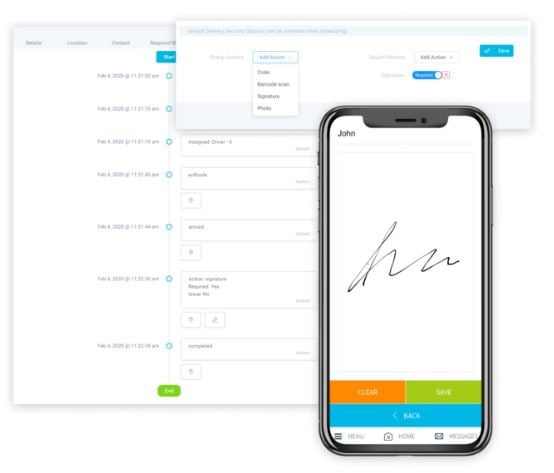
Those methods can include:
Ideally, you’ll find a platform that supports all of the above POD methods, allowing customers to choose one according to their preferences or the one best suited for a given package.
Last but not least, the following couple of features are an absolute must-have for a solution to provide first-rate route optimization
Dynamic routing includes more than simple route planning and optimisation.
This routing considers all the possible unforeseen circumstances that affect the ETA and the optimal route that happen while the vehicles are already in motion.
What this means is that a platform’s route planning algorithm needs to be able to quickly adapt to any change that happens in transit (such as traffic jams, accidents, road closures, weather conditions, etc.) and automatically find the next optimal route and recalculate the ETA.
So, the basics of dynamic routing include the following:
![]()
When you manage large fleets or complex multi-day or multi-depot operations, fleet dispatch becomes essential to streamline operations and improve efficiency. Some other advanced options can always come in handy, including:
Geocoding is the process of converting addresses into geographic coordinates.
And if you’ve ever followed your GPS app to an address only to find yourself outside a back gate with the front door around the other side on another street, you’re more than familiar with the perils of poor geocoding.
Different software tools use different geocoders, some of which are better than others, so you should pay attention to this as well.
Without adequate geocoding, you’ll often find your vehicles stuck in back alleys and side streets.
Routing in fleet management is the process of planning and optimizing vehicle routes to ensure efficient and cost-effective transportation. It’s essential for timely and secure deliveries, whether for last-mile, mid-mile, or long-haul operations, and directly influences logistics performance and costs.
Fleet optimization is the use of data and technology to enhance the efficiency and performance of a vehicle fleet. It includes tasks like multi-stop route planning, managing vehicle maintenance, overseeing drivers, and reducing fuel consumption.
Route optimization relies on tools such as GPS tracking, telematics, and advanced algorithms to identify the most efficient routes for delivery drivers.
Route optimization software is a tool designed to help businesses plan and manage the most efficient routes for their vehicles. It uses advanced algorithms to evaluate factors like traffic, distance, and delivery time windows, ensuring optimal route planning.
A routing strategy defines the path used to navigate through a warehouse to collect all items for an order. It focuses on minimizing the route length to reduce order picking costs and improve efficiency.
The need for fleet management optimization solutions that can solve more than just one delivery-related problem at a time has never been greater nor more urgent.
With plenty of options on the market, finding and picking the right one for you can be overwhelming.
However, now that you know what the features you can’t do without are, finding a solution that will deliver - no pun intended - will be that much easier.
In fact, one such solution that offers all three categories of features needed for boosting your business’s efficiency is eLogii.
Optimize routes, boost productivity, and ensure compliance with eLogii's fleet management solution. Simplify operations and maximize efficiency today!
Top 7 truck dispatch apps for 2024: Find the best solutions for real-time tracking, route optimization, and efficient fleet management.
Boost efficiency and profits with fleet optimization by using smart routes, automation, and proactive maintenance to cut costs and improve service...
Be the first to know when new articles are released. eLogii has a market-leading blog and resources centre designed specifically to help business across countless distribution and field-services sub sectors worldwide to succeed with actionable content and tips.
